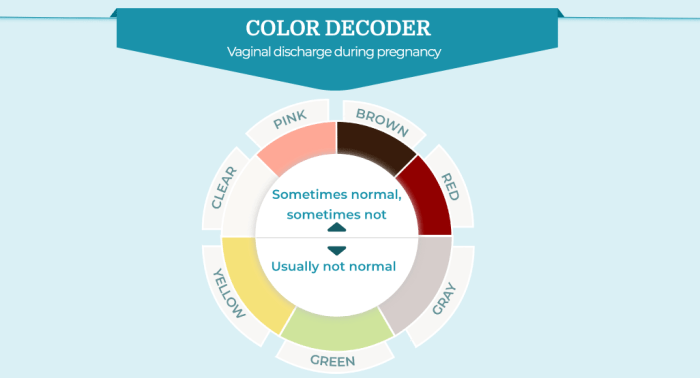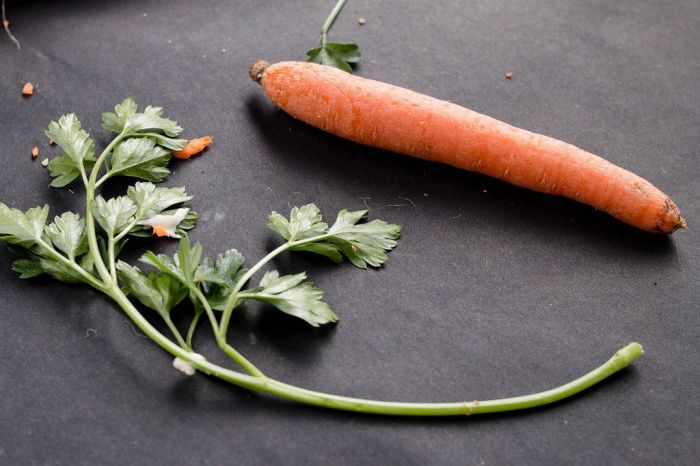Handful of walnuts every day for health is a delicious and surprisingly beneficial way to boost your well-being. This comprehensive guide delves into the incredible nutritional profile of walnuts, exploring their potential health benefits and practical ways to incorporate them into your daily diet. From cardiovascular health to blood sugar management, we’ll uncover the science behind why these nuts deserve a place in your daily routine.
We’ll explore the nutritional content of walnuts, comparing them to other nuts and seeds. We’ll also discuss the ideal serving size, potential risks, and a sample meal plan that makes incorporating walnuts easy. Plus, we’ll cover important considerations like potential allergies and how to store walnuts for optimal freshness.
Nutritional Benefits of Walnuts
Walnuts, a versatile and delicious nut, are more than just a tasty snack. Their nutritional profile is packed with essential nutrients, offering a range of potential health benefits. From healthy fats to essential vitamins and minerals, incorporating a handful of walnuts daily into your diet can be a smart choice for overall well-being.The nutritional powerhouse of walnuts lies in their unique composition of healthy fats, fiber, and various vitamins and minerals.
These nutrients work synergistically to support various bodily functions, from brain health to heart health. Furthermore, walnuts offer a convenient and delicious way to increase your intake of these beneficial components.
Nutritional Profile of Walnuts
Walnuts are a rich source of essential nutrients, making them a valuable addition to a balanced diet. They contain a substantial amount of healthy fats, primarily polyunsaturated fatty acids, including omega-3 fatty acids, which are crucial for various bodily functions. This profile also includes various vitamins and minerals.
Key Vitamins and Minerals
Walnuts are a good source of vitamin E, a potent antioxidant that helps protect cells from damage. They also contain significant amounts of magnesium, a mineral vital for muscle and nerve function, and zinc, which plays a role in immune function and cell growth. Additionally, walnuts contain vitamin B6, essential for red blood cell formation and brain function.
Healthy Fats and Their Benefits
The majority of the fat content in walnuts is unsaturated, which is beneficial for heart health. The omega-3 fatty acids in walnuts, specifically alpha-linolenic acid (ALA), can help lower triglycerides and improve blood cholesterol levels. This can contribute to a healthier cardiovascular system. Furthermore, healthy fats are important for brain function and hormone production.
Incorporating Walnuts into Your Diet
Walnuts can be incorporated into a wide variety of dishes, making them a flexible addition to your daily meals. They can be enjoyed as a snack, sprinkled on salads, added to yogurt or oatmeal, or incorporated into baked goods. The versatility of walnuts makes them an easy way to increase their intake.
Comparison of Nutritional Content
| Nutrient | Handful of Walnuts (approx. 30g) | Handful of Almonds (approx. 30g) | Handful of Chia Seeds (approx. 30g) |
|---|---|---|---|
| Calories | 180-200 | 160-180 | 130-150 |
| Protein (g) | 4-5 | 6-7 | 5-6 |
| Fat (g) | 15-18 | 14-16 | 9-11 |
| Fiber (g) | 2-3 | 2-3 | 10-12 |
| Vitamin E (mg) | 2-3 | 1-2 | 0.5-1 |
| Magnesium (mg) | 2-3 | 2-3 | 2-3 |
The table above provides a general comparison of nutritional content. Exact values may vary slightly based on the specific type of nuts and seeds. It is important to note that all these options are good sources of healthy nutrients.
Daily Consumption and Dosage
Walnuts, a nutritional powerhouse, offer a plethora of health benefits when consumed in moderation. Understanding the recommended daily serving size and potential risks of overconsumption is crucial for maximizing their positive impact on your well-being. This section delves into the appropriate dosage and potential pitfalls associated with excessive walnut consumption, providing a practical guide for incorporating them into your daily diet.The recommended daily serving size for walnuts, for potential health benefits, is approximately one-fourth to one-half cup, or roughly a handful.
This amount generally provides a sufficient dose of beneficial nutrients without posing significant risks. Different studies have highlighted the potential advantages of consuming this amount of walnuts.
Recommended Daily Serving Size
A handful of walnuts, typically equivalent to about 1/4 to 1/2 cup, is generally considered the optimal daily intake for maximizing health benefits. This amount provides a good balance of nutrients without excessive calories. Research indicates that this range is most likely to yield the greatest positive effects.
Potential Risks and Side Effects of Excessive Consumption
While walnuts are generally safe, consuming excessive amounts can potentially lead to some side effects. High calorie content is a major concern. Overconsumption can contribute to weight gain if not balanced with a healthy diet and exercise routine. Some individuals may experience digestive discomfort, such as bloating or gas, if they consume walnuts in unusually large quantities.
This is especially important for individuals sensitive to nuts. Moreover, walnuts are high in fat, and excessive intake might negatively impact blood lipid profiles in some cases.
Meal Plan Incorporating Walnuts
Incorporating walnuts into your daily meals can be simple and delicious. Here’s a sample meal plan designed to include a handful of walnuts in each day’s meals:
- Breakfast: A bowl of oatmeal topped with a handful of walnuts, a sprinkle of cinnamon, and a drizzle of honey. This provides a satisfying and nutritious breakfast, starting your day with essential nutrients.
- Lunch: A mixed green salad with grilled chicken or fish, sliced avocado, and a handful of walnuts. This provides a complete and balanced lunch, offering protein, healthy fats, and essential vitamins and minerals.
- Dinner: A quinoa bowl with roasted vegetables, chickpeas, and a handful of walnuts. This offers a complete protein source and fiber-rich meal that promotes satiety and supports digestive health.
Different Ways to Consume Walnuts Daily
Walnuts can be enjoyed in a variety of ways throughout the day. This table highlights some creative and convenient methods for including walnuts in your diet:
| Category | Example |
|---|---|
| Snacks | A handful of walnuts as a midday snack. |
| Salads | Adding walnuts to salads for added crunch and healthy fats. |
| Desserts | Using walnuts in baked goods or granola bars. |
| Breakfast | Walnuts in oatmeal or yogurt. |
| Lunch | Walnuts in sandwiches or wraps. |
| Dinner | Walnuts in stir-fries or pasta dishes. |
Health Implications and Interactions

A daily handful of walnuts, packed with healthy fats, fiber, and essential nutrients, can contribute significantly to overall well-being. However, understanding potential interactions with other health conditions or medications is crucial for safe and effective inclusion in your diet. This section delves into the intricate ways walnuts can affect cardiovascular health, blood sugar management, and potential interactions with medications.Walnuts, rich in polyunsaturated fats, are recognized for their potential to positively impact various aspects of health.
Their impact on cholesterol levels, blood sugar control, and cardiovascular well-being is a subject of ongoing research and clinical observation.
Cardiovascular Health Benefits
Walnuts’ impact on cardiovascular health is multifaceted. Their high content of omega-3 fatty acids, specifically alpha-linolenic acid (ALA), plays a crucial role in reducing inflammation and promoting healthy blood vessel function. Studies have shown that regular walnut consumption can help lower LDL (“bad”) cholesterol levels. This, in turn, can contribute to a reduced risk of heart disease. Lowering LDL cholesterol levels can be particularly important for individuals with a family history of cardiovascular issues.
Impact on Blood Sugar Levels and Diabetes Management
Walnuts’ effect on blood sugar levels is a positive one for those with or at risk of developing type 2 diabetes. The fiber content in walnuts helps regulate blood sugar responses after meals. The healthy fats present in walnuts also help slow the absorption of glucose into the bloodstream, preventing rapid spikes in blood sugar levels. Furthermore, the antioxidants present in walnuts can contribute to improved insulin sensitivity, which is crucial for effective glucose management.
For example, a controlled study on individuals with prediabetes found that consuming walnuts daily as part of a balanced diet led to significant improvements in glycemic control.
Potential Interactions with Medications or Other Health Conditions
While walnuts are generally safe for most individuals, potential interactions with specific medications or underlying health conditions should be considered. Individuals taking blood-thinning medications, such as warfarin, should consult their doctor before significantly increasing their walnut intake. The high fiber content in walnuts can sometimes interact with certain medications, impacting their absorption. Similarly, individuals with existing digestive issues should introduce walnuts gradually into their diet to assess their tolerance.
Effect on Cholesterol Levels
Walnuts’ positive impact on cholesterol levels is well-documented. Their high monounsaturated and polyunsaturated fats, particularly omega-3 fatty acids, contribute to lowering LDL (“bad”) cholesterol. In addition, walnuts may help increase HDL (“good”) cholesterol levels. These effects can translate to a healthier cardiovascular profile. For example, a meta-analysis of several clinical trials revealed a consistent reduction in LDL cholesterol among individuals who regularly consumed walnuts.
The impact varies depending on individual factors and dietary habits.
Potential Risks and Considerations

While walnuts offer a wealth of health benefits, it’s essential to acknowledge potential risks and considerations for daily consumption. Understanding these aspects allows for informed choices and ensures responsible integration of walnuts into a healthy diet. Careful attention to potential allergies, digestive effects, and proper storage practices can help maximize the positive impacts while minimizing any adverse effects.
Potential Allergies and Sensitivities
Walnuts, like many nuts, can trigger allergic reactions in susceptible individuals. Symptoms can range from mild discomfort like skin rashes or itching to more severe reactions such as difficulty breathing or anaphylaxis. Individuals with known nut allergies should avoid consuming walnuts. Symptoms of an allergic reaction to walnuts can manifest quickly after ingestion and include hives, swelling, itching, nausea, or vomiting.
If experiencing any such symptoms, immediate medical attention is crucial.
Potential Digestive Issues
While generally well-tolerated, walnuts can sometimes cause digestive issues in some individuals. Their high fiber content can lead to bloating, gas, or diarrhea in those with sensitive digestive systems. This is especially true for those consuming walnuts for the first time or increasing their intake significantly. Gradually increasing the daily amount of walnuts consumed can help to mitigate potential digestive distress.
A handful of walnuts every day is fantastic for overall health, packed with healthy fats and nutrients. While we’re on the topic of boosting your well-being, did you know that non-surgical treatments for rotator cuff tears are often a great option for managing pain and improving function? Non surgical treatments for rotator cuff tears can be highly effective, and combined with a healthy diet like one including walnuts, you can achieve a more comfortable and active lifestyle.
So, keep those walnuts coming!
Proper Storage for Maintaining Freshness and Nutritional Value, Handful of walnuts every day for health
Proper storage is key to preserving the freshness and nutritional value of walnuts. Store walnuts in an airtight container in a cool, dry, and dark place. Avoid storing them near strong odors, as they can absorb these. This will help maintain their nutritional value and prevent rancidity. Walnuts can be stored in the refrigerator or freezer for longer periods of preservation.
The refrigerator will help maintain freshness for a few weeks, while freezing will help preserve them for months.
Summary Table of Potential Risks and Considerations
| Potential Risk/Consideration | Description | Mitigation Strategies |
|---|---|---|
| Allergies/Sensitivities | Walnuts, like other nuts, can trigger allergic reactions in susceptible individuals. | Avoid walnuts if you have known nut allergies. Monitor for symptoms such as hives, swelling, or difficulty breathing. |
| Digestive Issues | High fiber content in walnuts can lead to bloating, gas, or diarrhea in some individuals. | Gradually increase walnut consumption. Consume walnuts with meals to aid digestion. |
| Storage | Proper storage is crucial for maintaining freshness and nutritional value. | Store in an airtight container in a cool, dry, and dark place. Avoid storing near strong odors. Consider refrigeration or freezing for longer storage. |
Research and Studies
Unveiling the scientific backing behind the health benefits of walnuts requires delving into the realm of research studies. These studies provide crucial insights into the effects of regular walnut consumption on various aspects of human health, from cardiovascular well-being to cognitive function. Analyzing the methodologies, findings, and limitations of these studies allows for a more nuanced understanding of the potential benefits and risks associated with incorporating walnuts into a daily diet.Numerous studies have investigated the impact of walnuts on human health, yielding a variety of results.
Comparing these studies allows us to identify common themes and potential contradictions in the evidence. Understanding the nuances of these findings is essential for making informed decisions about walnut consumption. A critical examination of the methodologies used in these studies helps to evaluate the reliability and validity of the conclusions.
Summary of Relevant Research Studies
Studies consistently show a correlation between regular walnut consumption and improved cardiovascular health. Many trials demonstrate a positive impact on blood lipid profiles, including reduced levels of LDL (“bad”) cholesterol and triglycerides. Furthermore, some studies suggest that walnuts may contribute to the maintenance of healthy blood pressure.
Comparison of Research Findings
While many studies highlight the positive effects of walnuts, variations exist in the methodologies and conclusions. Some research focuses on specific populations, such as individuals with existing cardiovascular conditions, while others examine the effects of walnut consumption in healthy adults. This variation in study design can lead to different interpretations of the findings.
A handful of walnuts daily is a fantastic addition to a healthy lifestyle, packed with nutrients. However, it’s also important to be aware of specific health concerns, like prostate health. For example, understanding if a Gleason 6 prostate cancer diagnosis is truly cancerous is crucial. Finding reliable information on this topic can be vital, and a good resource is is gleason 6 prostate cancer really cancer.
Ultimately, while walnuts are a great addition to your diet, it’s essential to consider the bigger picture of overall health and seek professional medical advice when needed.
Methodologies Used in Studies
The methodologies employed in these studies vary, which can influence the results. Some studies use controlled trials, where participants are randomly assigned to either a walnut-consuming group or a control group. Observational studies, which track the dietary habits and health outcomes of large populations, can also provide valuable insights. These different approaches offer varying levels of evidence and certainty in their conclusions.
For instance, controlled trials often involve a specific amount of walnut consumption over a set duration, while observational studies may track varied consumption patterns over extended periods. Crucially, the control groups in controlled trials are essential to isolate the effects of walnuts. If the control group isn’t properly matched, the results might not accurately reflect the impact of walnuts.
Limitations of the Research
Despite the positive findings, certain limitations exist in the existing research. One significant limitation is the relatively short duration of many studies. Longer-term studies are needed to fully understand the cumulative effects of daily walnut consumption over decades. Furthermore, the diversity of participant populations and dietary habits can influence the results. Studies often need to account for confounding factors like overall diet and lifestyle choices to isolate the precise effects of walnuts.
Another limitation often encountered is the potential for funding bias in research. The funding source may influence the study design or the interpretation of results, impacting the objectivity of the research.
Specific Examples of Research Studies
One notable study observed a significant reduction in LDL cholesterol levels among participants consuming a diet rich in walnuts. This finding aligns with other research indicating that walnuts can positively impact blood lipid profiles. Another study, focusing on healthy adults, observed an improvement in blood pressure after consistent walnut consumption. However, the exact mechanisms by which walnuts affect blood pressure remain a subject of ongoing research.
These examples highlight the range of research findings and the importance of considering the specific methodology and context of each study.
Recipes and Preparation Methods: Handful Of Walnuts Every Day For Health
Walnuts, a powerhouse of nutrients, are incredibly versatile. Beyond enjoying them as a simple snack, they can be incorporated into a wide array of dishes, adding a satisfying crunch and a boost of healthy fats. This section will explore various preparation methods and recipes to help you maximize the nutritional benefits of walnuts in your daily meals.
Simple Ways to Prepare Walnuts
Walnuts can be enjoyed in their natural state, but roasting, chopping, or blending them can enhance their flavor and texture, making them perfect for a variety of dishes. Roasting brings out a subtle nutty aroma, while chopping or blending allows them to be incorporated seamlessly into recipes. The best method often depends on the specific dish you are creating.
Incorporating Walnuts into Meals
Walnuts are not limited to salads or desserts. Their versatility allows for their inclusion in savory dishes as well. For instance, they can be added to breakfast cereals, sprinkled on oatmeal, or incorporated into stir-fries. They can be blended into smoothies, added to sauces, or even used as a topping for grilled meats. The key is to consider the texture and flavor profile of the dish when deciding how to incorporate walnuts.
Walnut-Based Recipes
The following table provides a selection of recipes featuring walnuts, categorized by meal type. These are just starting points; feel free to adjust ingredients and seasonings to your liking.
| Meal Type | Recipe Idea | Preparation Notes |
|---|---|---|
| Breakfast | Walnut-Oatmeal with Berries | Combine rolled oats, milk, walnuts, and your favorite berries for a quick and nutritious breakfast. |
| Lunch | Mediterranean Quinoa Salad | Mix cooked quinoa with chopped vegetables, feta cheese, and walnuts for a light and flavorful lunch. |
| Dinner | Walnut-Crusted Chicken Breast | Coat chicken breast in a mixture of walnuts, breadcrumbs, herbs, and spices before baking or grilling. |
| Snacks | Roasted Walnuts with Honey | Roast walnuts until fragrant, then drizzle with honey for a sweet and savory snack. |
| Dessert | Walnut-Chocolate Energy Bites | Combine walnuts, dates, cocoa powder, and other ingredients to create delicious and healthy energy bites. |
Roasting Walnuts
Roasting walnuts enhances their flavor and aroma. Preheat oven to 350°F (175°C). Spread walnuts in a single layer on a baking sheet. Roast for 8-10 minutes, or until fragrant and lightly browned. Stir occasionally to ensure even cooking.
Cooling and storing the walnuts in an airtight container will help preserve their freshness.
Chopping and Blending Walnuts
Chopping walnuts is a simple process that allows them to be added to various dishes. Using a sharp knife, chop walnuts into desired sizes, depending on the recipe. Blending walnuts creates a smoother texture that can be used in sauces, smoothies, or spreads. Consider using a food processor or blender for optimal results.
Comparison with Other Nuts
Walnuts, with their distinctive flavor and versatility, are a popular choice among nut enthusiasts. However, many other nuts offer comparable nutritional value and health benefits. Understanding the differences between walnuts and other popular nuts like almonds, cashews, and pecans allows for a more informed dietary approach. This comparison considers nutritional value, taste, texture, and preparation methods.Exploring the diverse world of nuts reveals a wealth of nutritional goodness, and understanding their individual characteristics helps in choosing the best options for your dietary needs.
A comparative analysis highlights the similarities and differences, providing valuable insights into the unique qualities of each nut.
Nutritional Value Comparison
Different nuts provide various amounts of essential nutrients. While all nuts contribute to a healthy diet, the specific nutrient profiles vary. This difference is crucial for tailoring your nut intake to meet individual nutritional requirements.
| Nut | Protein (g/100g) | Fat (g/100g) | Fiber (g/100g) | Vitamins & Minerals |
|---|---|---|---|---|
| Walnuts | 15-18 | 65-70 | 3-6 | Vitamin E, Magnesium, Zinc |
| Almonds | 21 | 50-55 | 4-6 | Vitamin E, Calcium, Magnesium |
| Cashews | 5-6 | 45-50 | 3-4 | Vitamin B6, Iron, Phosphorus |
| Pecans | 12 | 68-70 | 2-4 | Vitamin E, Potassium, Phosphorus |
Health Benefits Compared
While all nuts contribute to overall health, their specific benefits may vary based on the particular nutrients they contain. Comparing the potential health benefits can inform decisions about incorporating them into your diet.
A handful of walnuts daily can be a fantastic addition to a healthy lifestyle, boosting brain function and heart health. Pairing them with a little turmeric and black pepper, like in the turmeric and black pepper blend, can further enhance their nutritional benefits. The combination of these spices is believed to increase the absorption of nutrients, making your daily walnut intake even more effective.
So, go ahead and enjoy that handful of walnuts – your body will thank you!
- Heart Health: Walnuts, like other nuts, are known for their heart-healthy fats. However, the specific types of fats and antioxidants in walnuts may contribute to a more pronounced effect on blood cholesterol levels compared to other nuts.
- Brain Function: The unique omega-3 fatty acid content in walnuts makes them particularly beneficial for brain health. Almonds and pecans also contribute to brain function, but the specific types and levels of beneficial nutrients differ.
- Blood Sugar Control: The fiber content in nuts, including walnuts, can help regulate blood sugar levels. Almonds, cashews, and pecans also have varying amounts of fiber and impact on blood sugar control. This should be considered in combination with other factors when evaluating the effect on blood sugar.
Taste, Texture, and Preparation
The distinct flavor profiles and textures of nuts contribute to their culinary versatility.
- Taste: Walnuts possess a rich, slightly nutty, and sometimes earthy flavor. Almonds are known for their mild, sweet flavor, cashews have a buttery, creamy flavor, and pecans offer a distinctive, more complex flavor. The differences in taste allow for various culinary applications.
- Texture: Walnuts have a distinctive crunch and a slightly soft interior. Almonds have a firm, crunchy texture. Cashews are known for their soft, creamy texture. Pecans possess a satisfying crunch with a slight chewiness.
- Preparation: Walnuts are commonly eaten whole, in salads, or as part of baked goods. Almonds are frequently used in baked goods, as a snack, or in recipes like almond milk. Cashews are often used in sauces, desserts, and as a snack. Pecans are a popular addition to baked goods, especially pies and cakes. The diverse preparation methods reflect the versatility of each nut.
Incorporating Walnuts into a Balanced Diet
Walnuts, a nutritional powerhouse, offer a plethora of health benefits. However, maximizing their impact on your well-being requires integrating them seamlessly into a broader, balanced dietary strategy. This approach ensures you reap the full rewards of walnut consumption without disrupting your overall health goals.A balanced diet, encompassing a variety of nutrient-rich foods, forms the foundation for optimal health.
Daily walnut consumption, when incorporated correctly, can significantly enhance this foundation, providing essential nutrients and healthy fats alongside other beneficial foods. This integration allows you to enjoy the advantages of walnuts while maintaining a holistic and well-rounded approach to nutrition.
Importance of a Balanced Diet
A balanced diet is crucial for overall health and well-being. It involves consuming a diverse range of foods from all food groups, including fruits, vegetables, whole grains, lean proteins, and healthy fats. This variety ensures your body receives the essential vitamins, minerals, and macronutrients it needs to function optimally. A balanced diet supports various bodily functions, from boosting immunity to maintaining healthy weight and energy levels.
Complementary Foods and Dietary Patterns
Walnuts can beautifully complement various healthy foods and dietary patterns. Their high protein and healthy fats content makes them a superb addition to vegetarian and vegan diets, providing essential nutrients often lacking in plant-based diets. Furthermore, they can enhance the nutritional value of salads, breakfast cereals, and even desserts, adding a satisfying crunch and a boost of healthy fats.
Consider incorporating walnuts into a diet rich in fiber, fruits, and vegetables for a well-rounded and nutritious meal plan.
Example of a Balanced Meal Plan
A balanced meal plan incorporating a handful of walnuts might look like this:
- Breakfast: Oatmeal with berries, a sprinkle of walnuts, and a dollop of Greek yogurt. This provides complex carbohydrates, antioxidants, protein, and healthy fats.
- Lunch: A large salad with mixed greens, grilled chicken or chickpeas, chopped walnuts, and a light vinaigrette dressing. This combines lean protein, healthy fats, fiber, and essential vitamins and minerals.
- Dinner: Baked salmon with roasted vegetables (broccoli, carrots, and sweet potatoes), topped with a sprinkle of walnuts. This provides healthy fats, lean protein, and vitamins and minerals.
- Snack: A small handful of walnuts with a piece of fruit, like an apple or banana. This provides a satisfying and nutritious snack.
Detailed Guide on Incorporating Walnuts
This guide Artikels strategies for incorporating walnuts seamlessly into a balanced diet:
- Start Gradually: Begin with a small handful of walnuts daily and gradually increase the amount as tolerated. Listen to your body and adjust portions accordingly. This gradual approach allows you to adapt to the new addition without feeling overwhelmed.
- Variety in Consumption: Incorporate walnuts into different meals and snacks throughout the day. This could include adding them to your morning cereal, using them as a topping for yogurt or salads, or enjoying them as a standalone snack. This diversity ensures you get the full range of benefits from walnuts.
- Combine with Other Nutrients: Pair walnuts with other healthy foods to maximize their nutritional impact. For instance, adding walnuts to a smoothie or a bowl of oatmeal can increase the protein and healthy fat content. Combining walnuts with fruits and vegetables can provide a variety of vitamins and minerals.
- Mindful Portions: Be mindful of portion sizes. A small handful (about 1/4 cup) of walnuts daily is usually sufficient. Excessive consumption might lead to increased calorie intake, which may affect your weight goals. Portion control ensures you maintain a balanced approach.
Outcome Summary
In conclusion, incorporating a handful of walnuts daily can be a significant step toward a healthier lifestyle. We’ve examined the nutritional powerhouse that walnuts represent, the potential health benefits, and how to safely and effectively integrate them into your diet. From delicious recipes to a balanced meal plan, this guide equips you with the knowledge to make informed choices and reap the rewards of adding walnuts to your daily routine.
Remember, a balanced diet and mindful consumption are key to maximizing the benefits of this nutritious nut.




























